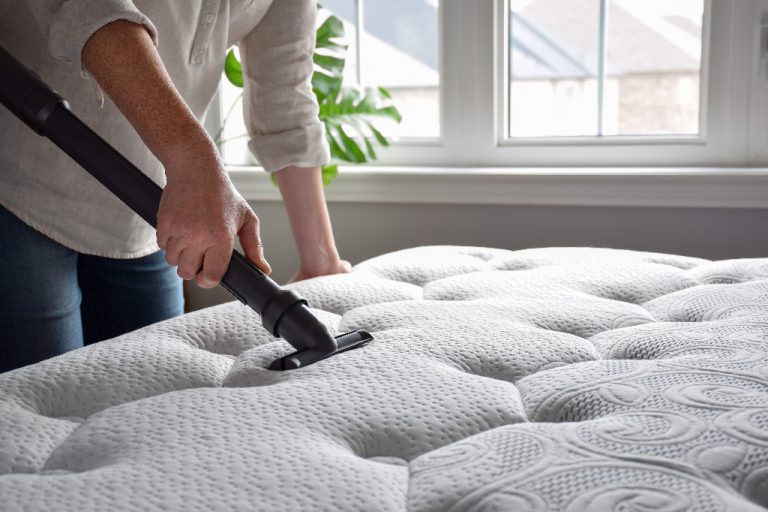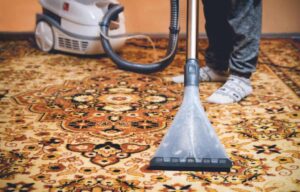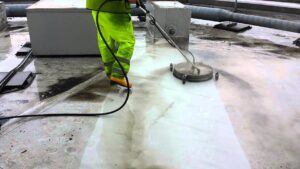It’s been a long day. You’re finally ready to crawl into bed, sink into your comfortable mattress, and drift off to sleep. But as you do, an unsettling thought crosses your mind—when was the last time you cleaned your mattress? You fluff your pillows and shift around, trying to ignore the fact that your mattress might be harboring more than just your sleep. Dust mites, sweat stains, allergens, and occasional spills have likely made their way deep into its fibers. Many of us are diligent about changing bed linens, but the mattress itself? That’s often overlooked. Yet, considering we spend roughly a third of our lives in bed, cleaning your mattress should be a priority for maintaining a healthy and hygienic sleeping environment. In this article, we’ll take a deep dive into how to clean a mattress effectively, along with some startling statistics that might inspire you to start freshening up your bed more regularly.
Why Cleaning Your Mattress Is Essential
The importance of cleaning your mattress cannot be overstated. According to Consumer Reports, mattresses are an expensive investment, with the average person spending anywhere from $500 to $3,000 or more on a new one. But beyond the financial investment, regularly cleaning your mattress is crucial for your health and well-being.
- Dust Mites and Allergens
One primary reason for cleaning a mattress is to remove dust mites, microscopic creatures that feed on dead skin cells. According to the American Lung Association, millions of dust mites live in mattresses, pillows, and bedding. These tiny pests can trigger allergies and asthma, leading to symptoms like sneezing, coughing, and itchy eyes. Regular cleaning helps reduce dust mites and other allergens like pet dander, improving the air quality in your bedroom.
- Sweat, Oil, and Stains
Over time, sweat, body oils, and dead skin cells accumulate on the surface of your mattress. If left untreated, this can lead to unsightly stains and an unpleasant odor. A clean mattress ensures you’re sleeping in a fresh, hygienic environment.
- Longevity
Cleaning your mattress can extend its lifespan. Regularly removing dirt, debris, and moisture prevents mold growth, mildew, and material degradation, keeping your mattress in top condition for years to come.
How Often Should You Clean Your Mattress?
How often should you be cleaning your mattress? According to a survey conducted by Statista, nearly 50% of respondents admitted that they clean their mattresses less than once a year, while 13% said they never clean them at all. Mattress experts, however, recommend cleaning your mattress at least twice a year, with spot cleaning as needed throughout the year. If you suffer from allergies or have pets that sleep in the bed, you may want to clean it more frequently—about every three months.
A Step-by-Step Guide to Cleaning Your Mattress
Cleaning your mattress might seem daunting, but it’s a simple process that can be broken down into manageable steps.
How to clean mattress? Following this guide, you can maintain a fresh, clean mattress that promotes better sleep and overall well-being.
- Strip the Bed and Wash Your Bedding
The first step in cleaning your mattress is to remove all bedding, including sheets, pillowcases, and blankets. Wash them in hot water to kill any dust mites or bacteria that may have accumulated. According to the National Sleep Foundation, washing your bedding once a week is crucial for keeping dust mites and allergens at bay.
Pro Tip: When washing your sheets, add a cup of white vinegar to the wash cycle to help eliminate any odors.
- Vacuum the Mattress
Once your mattress is stripped, it’s time to vacuum it thoroughly. Use the upholstery attachment on your vacuum cleaner to remove dust, hair, dead skin cells, and any other debris. Pay extra attention to seams, corners, and the edges of your mattress, where dust accumulates.
If you have allergies, consider using a vacuum with a HEPA filter. WebMD suggests that HEPA filters are more effective at trapping allergens than regular vacuum filters, ensuring your mattress is as clean as possible.
- Spot Clean Stains
Mattresses can be susceptible to various stains, from sweat and body oils to food spills and accidents from pets or children. The key to removing stains is to address them as soon as possible, but even older stains can often be lifted with the proper technique.
Mix a simple cleaning solution of equal parts cold water and hydrogen peroxide for general stains. Apply the solution to the stained area with a clean cloth, but avoid soaking the mattress—too much moisture can lead to mold growth. Blot the stain gently until it lifts, then use a separate cloth to dry the area.
Good Housekeeping recommends using an enzymatic cleaner for stricter stains like blood or urine. These cleaners break down proteins in the stains, making them easier to remove. Enzymatic cleaners are particularly effective for pet-related stains.
- Deodorize the Mattress with Baking Soda
After spot cleaning, it’s time to freshen up your mattress and eliminate any lingering odors. Baking soda is a natural deodorizer and is excellent for neutralizing smells. Sprinkle a generous layer of baking soda over the entire surface of your mattress and let it sit for at least 15 minutes. For best results, leave it on for a few hours, allowing the baking soda to absorb odors more thoroughly.
Once the baking soda has had time to work its magic, vacuum it up using the upholstery attachment. This will not only leave your mattress smelling fresh but also help lift any moisture that may have settled into the fabric.
- Flip or Rotate the Mattress
Many mattresses, especially older models, can benefit from being flipped or rotated every few months. This helps distribute wear and tear evenly, preventing sagging and prolonging the life of your mattress. Check your mattress manufacturer’s guidelines—some modern mattresses are designed with specific layers for comfort and support and shouldn’t be flipped.
Pro Tip: If you’re flipping your mattress, clean the other side using the same steps mentioned above.
- Use a Mattress Protector
Once your mattress is clean and fresh, please protect it from future spills, stains, and dust mites by using a mattress protector. A high-quality waterproof protector can protect against accidents, sweat, and dust, helping keep your mattress cleaner for longer. According to SleepFoundation.org, using a mattress protector can significantly extend the lifespan of your mattress by keeping it dry and free from dirt and allergens.
Specialized Cleaning Techniques for Different Mattress Types
Different types of mattresses require slightly different cleaning techniques. Here’s how to approach cleaning some of the most common mattress types:
Memory Foam
Memory foam mattresses should not be soaked or saturated with water, as this can damage the foam. When cleaning memory foam, stick to vacuuming and light spot treatments with minimal water or cleaning solution. Always allow the mattress to air out and dry thoroughly before putting your bedding back on.
Latex Mattresses
Latex mattresses are naturally resistant to dust mites and allergens but still require regular cleaning. Similar to memory foam, latex should not be soaked. Vacuuming and light spot cleaning are sufficient for keeping a latex mattress clean.
Innerspring Mattresses
Innerspring mattresses can typically handle more moisture than memory foam or latex, but it’s still essential to avoid oversaturating them. Follow the same cleaning process: vacuum thoroughly, spot-clean stains, and deodorize with baking soda.
Conclusion: Keeping Your Mattress Fresh and Hygienic
Cleaning your mattress might not be the most exciting task on your to-do list, but it’s essential for maintaining a healthy sleep environment and extending the life of your investment. By incorporating regular vacuuming, spot cleaning, and deodorizing into your routine, you can keep your mattress free from dust mites, stains, and odors. And with the help of a good mattress protector, you’ll be well on your way to ensuring your bed remains a comfortable, clean haven for years to come.
Remember, we spend about a third of our lives in bed—so taking care of your mattress is an investment in your overall well-being. So, the next time you think about changing your sheets, take a few extra steps to clean your mattress. Your body (and your sleep) will thank you for it!






